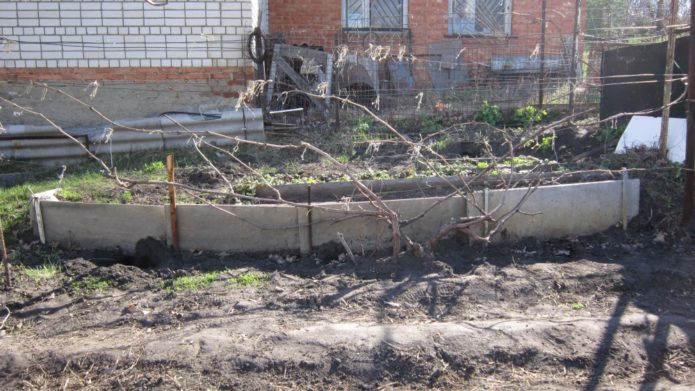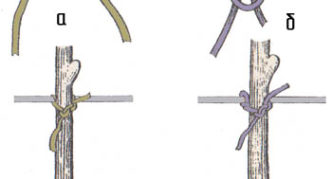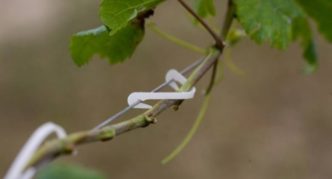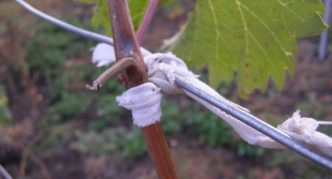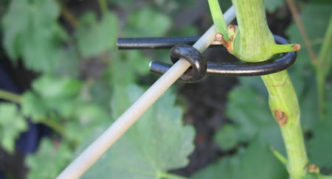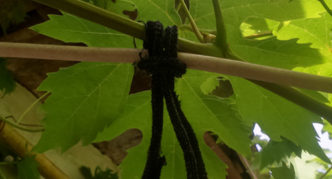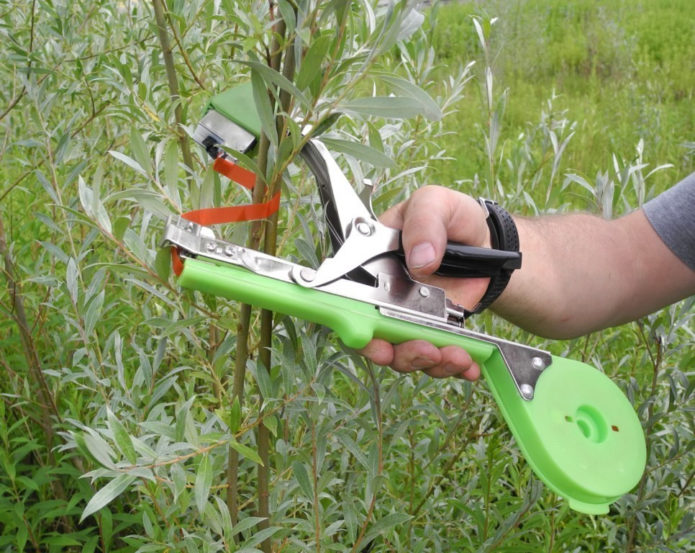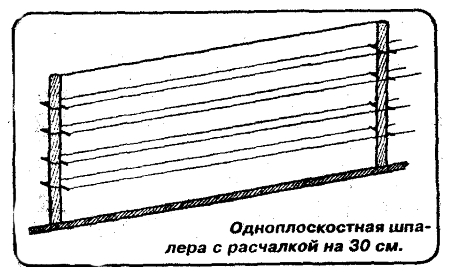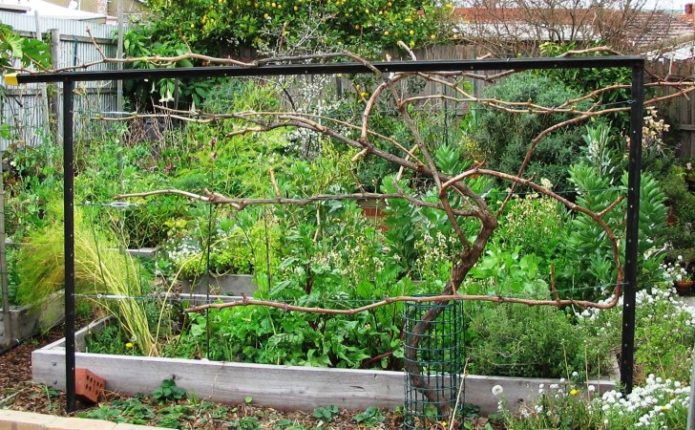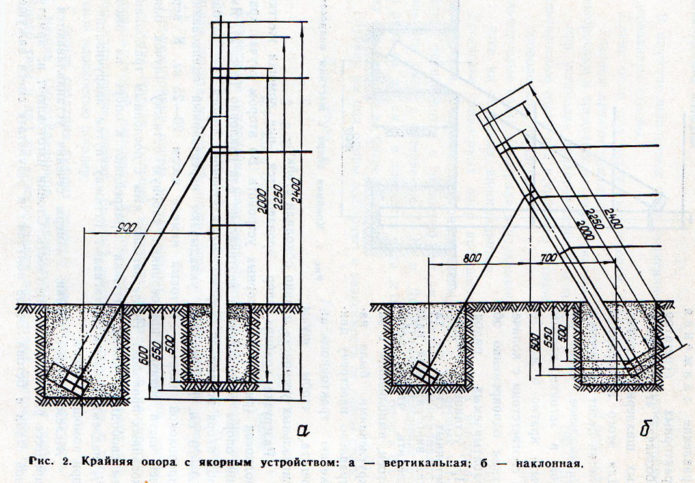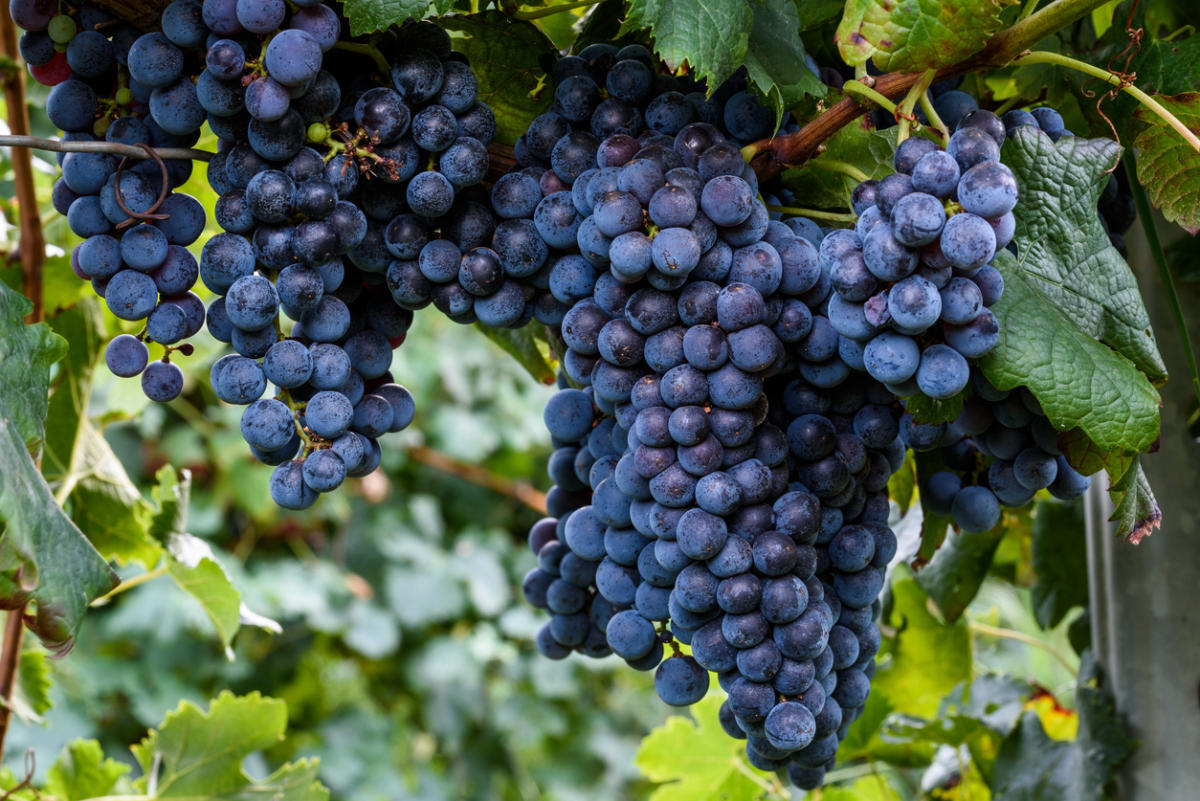The vine, like any liana, always reaches for the sun, braiding everything around with its shoots. In order for the grower to get the desired berries, and not a lot of greenery, it is necessary to prune and tie the vineyard.
Content
Ways to tie grapes and their features
The vines begin to tie up after the threat of severe spring frosts has passed, at the beginning of sap flow, but before the buds open. It is during this period that the vine is elastic and can bend without the risk of fracture.
There are concepts such as dry and green garter. In the spring, a dry garter is carried out - the overwintered lashes are raised and fixed on the trellis. In the summer, when the green shoots grow 40 cm, they carry out a second garter - green.
Dry garter of grapes
The main task when dry garter grapes is to evenly distribute the vines over the support. This is done so that each shoot receives sunlight and the vines are blown by the wind. In thickened vineyards, yields fall, diseases often occur.
Various materials are used when tying to the trellis. Most often, large perennial shoots are tied up with strong twine, and thinner fruit sleeves are tied up with improvised materials: chopped nylon tights, strips of cotton fabric, rags or special ribbons. It is better not to use wire, as it can grow into the vine and disrupt sap flow.
Pruning grapes in the fall, instructions with diagrams and pictures for beginners:https://flowers.bigbadmole.com/en/uhod-za-rasteniyami/obrezka-vinograda-osenyu.html
Video: dry garter grapes
Photo gallery: various materials for garters of grapes and methods of fastening them
- The most successful ways to attach vines to a trellis
- There are special hooks for attaching the shoot to the trellis
- Tying the vine with a soft strip of cloth can be quick and safe to escape
- Wire tie is not the best option, as it can injure the shoot bark
- If you cut unnecessary socks into rings, you get a soft and very comfortable loop for tying grapes
Garter grapes to the trellis
Most often, gardeners make vertical single-plane trellises for grape garters. Putting such a support is not particularly difficult.
If follow grape planting pattern, in the first year, it is usually enough just stakes near the seedling, along which the first shoot is allowed, and from the second year they are already building trellises. The easiest way is to install 2 vertical supports and stretch the wire between them in several rows.
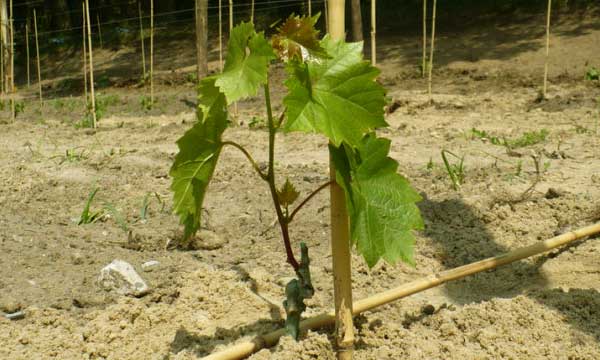
In the year of planting, the grapes are tied up vertically so that the shoot grows as long as possible
The lower wire should be at a distance of 30–40 cm from the ground - this is the first tier of the trellis, on which perennial sleeves are fixed.On the second tier, shoots that will bear fruit are fixed horizontally or at an angle. If you fix them vertically up, then in the spring only the upper buds will start to grow, and the rest will remain dormant or give a weak growth.
Young green shoots that appear in summer are tied to the third and fourth tier of the trellis.
Sometimes, in order to save space, the vines are tied up with an arc or ring - this is not the best option for forming, since the buds will receive an unequal amount of nutrients, and therefore, the development of young shoots will be uneven.
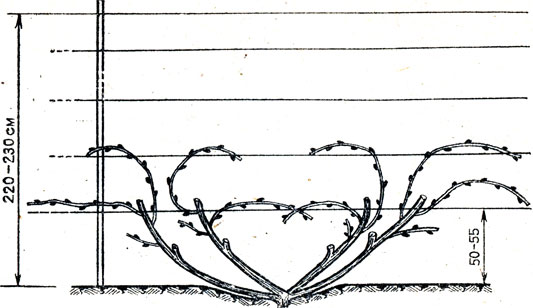
To save space, some branches are tied up with an arc, but in this case, the development of new shoots will be uneven
Video: garter grapes on a single-plane trellis
Fan garter grapes
Fan forming of the bush is most often used in the area of covering viticulture. This form is characterized by several perennial arms with fruit vines. The number of sleeves depends on the feeding area of the bush and the gardener's preferences. Most often 4 or 6 are left.
Grape sleeves are tied in the form of a fan on a trellis, and the fruit-bearing vines are attached obliquely, at an angle of 30about and 60about. You can only tie them vertically upward if you need to grow a replacement vine.
Polarity is inherent in grapes. It lies in the fact that the nutrients obtained from the soil, the plant continuously directs upward to the tips of the branches:https://flowers.bigbadmole.com/en/uhod-za-rasteniyami/obrezka-vinograda-vesnoy.html
Video: fan forming grapes
Garter Tips for Beginners
To get a good harvest, you need to follow these guidelines:
- tie up the grapes during the beginning of sap flow, while the buds have not yet blossomed;
- Bend the vine at an obtuse angle so that it does not break;
- tie up the vine with soft materials, do not use wire, thread, fishing line;
- first fix the material on the trellis wire, then wrap the shoot with a soft figure eight;
- if the grapes have vines of different lengths, then attach the short ones to the lower trellis, and the longer ones to the upper;
- to facilitate the garter, use a special stapler - tapener.
How to make a trellis for grapes
There are a lot of varieties of tapestries. The most commonly used is a single-plane trellis. Its main advantages are:
- very simple in the device, it can be made from inexpensive materials;
- the trellis, placed in the direction from south to north, provides uniform illumination of the vine bushes and good ventilation;
- does not become an obstacle to the treatment of vines, whether it is spraying, tying, pinching, picking berries or sheltering for the winter;
- you can place a large number of varieties, making the vines not very large.
However, such a tapestry is not without its disadvantages:
- only a four-arm fan can be fixed in one plane, but with a large number of sleeves it is very difficult;
- it is impossible to place many vines to obtain maximum yield, as thickening of the bush leads to disease.
It is better to make supports for the trellis during the laying of a planting trench for grapes, unless, of course, you decide to plant it according to all the rules, with drainage and very fertile soil. However, the first year after planting, the grapes are usually tied to a vertical support in order to get the longest possible shoot, which will be the first sleeve the next year.
A single-plane trellis is a row of high supports with wires stretched between them. The structure should last at least 20-30 years, while grapes grow on this place.
For the successful cultivation of grapes in summer cottages, several factors must be taken into account that determine the success of this undertaking:https://flowers.bigbadmole.com/en/yagody/vinograd/vinograd-na-dache.html
It is better to make wooden supports for trellis from such types of wood as oak or plum, as their wood does not decay for 15-30 years. The most popular pine and linden trees can last up to 10 years, and the most rapidly decaying trees are willow, birch, maple and alder. Before installing the wooden supports, the lower ends should be soaked in a 5% solution of copper sulfate for at least 10 days, and then additionally covered with resin. It is better not to use antiseptics used in construction.
For a durable trellis, they take metal supports about 2.5 m long, of which 50-60 cm will be buried in the ground, and the rest will serve to pull the wire. You should not make the support higher - it will be very inconvenient to tie the grapes to the upper tier.
The lower part of the pipes should be treated with bitumen.
The edge pillars carry a very heavy load, so it is better to use pipes of at least 10-15 cm in diameter. The rest of the pipes can be thinner. The length of the trellis can be any, and the distance between the posts should be from 4 to 6 m.
It is recommended to pull the first wire at a distance of 50–60 cm from the ground, but if you are planting in buried holes, then consider this distance from the planting level. The second and subsequent wires can be located at a distance of either 20–30 cm or 50 cm from the first.
So that the edge pillars do not lean inward under load and do not fall, they must be secured with jibs.
Tying grapes in the spring is a mandatory event aimed at providing the bush with light and air, fixing the vines in the right direction and ultimately getting a decent harvest.
